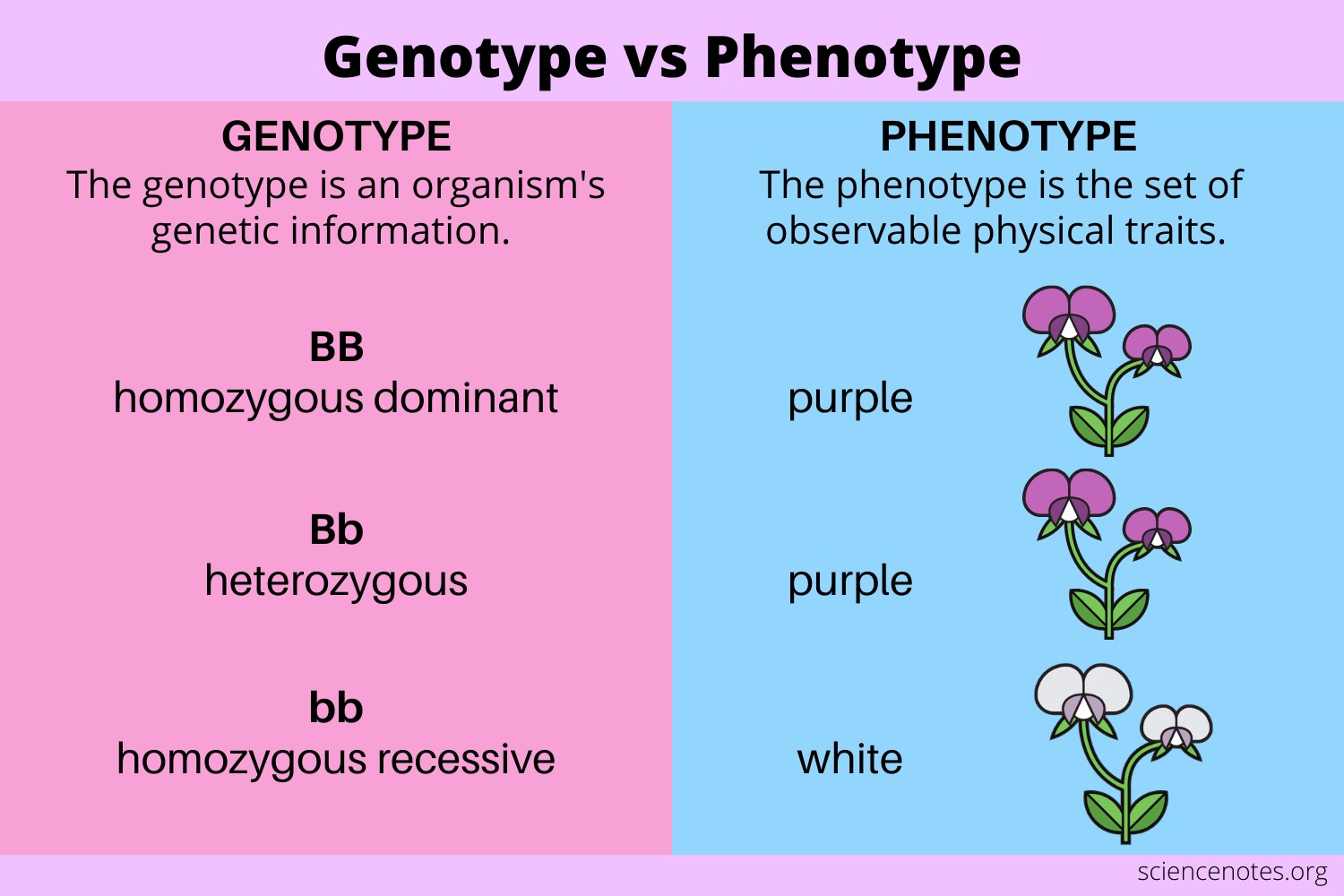What is an individual’s genetic makeup known as?
Genotype.
Chromotype.
Phenotype.
Karyotype.
The Correct Answer is A
Choice A rationale:
Genotype refers to the complete set of genetic instructions an individual inherits from their parents. It represents the actual genes present within an individual's cells, determining their traits and characteristics.
Genotype is the underlying genetic foundation that shapes an individual's phenotype, which is the observable expression of those genes.

Choice B rationale:
Chromotype is not a commonly used term in genetics. It may occasionally refer to the banding pattern observed on chromosomes during certain staining techniques, but it does not accurately represent an individual's complete genetic makeup.
Choice C rationale:
Phenotype refers to the observable physical or biochemical characteristics of an individual, such as eye color, height, blood type, or susceptibility to certain diseases. It is the result of the interaction between an individual's genotype and their environment.
While phenotype is influenced by genotype, it does not directly represent the underlying genetic code itself.
Choice D rationale:
Karyotype is a visual representation of an individual's chromosomes, arranged in pairs according to size and shape. It is often used to diagnose chromosomal abnormalities or genetic disorders, but it does not provide the full details of an individual's genetic makeup at the gene level.
Nursing Test Bank
Naxlex Comprehensive Predictor Exams
Related Questions
Correct Answer is C
Explanation
The correct answer is C. Only one copy of the variant gene is needed for expression of the disease.
Choice A rationale:
Huntington's disease (HD) is not typically diagnosed in childhood. While symptoms can sometimes manifest in adolescence or early adulthood, the average age of onset is between 30 and 50 years old.
Early-onset HD, which occurs before the age of 20, is much rarer and accounts for only about 5-10% of cases.
It's crucial to convey accurate information about the typical age of onset to avoid unnecessary anxiety and unwarranted testing in children.
Choice B rationale:
The statement "If you are a carrier, there is a 25% chance your child will inherit the gene" is not entirely accurate for autosomal dominant disorders like HD.
If a parent has HD, each child has a 50% chance of inheriting the mutated gene, not 25%. This is because the parent with HD has one mutated copy of the gene and one normal copy.
During conception, each child randomly receives one copy of the gene from each parent. Therefore, there's a 50% chance the child will receive the mutated copy and a 50% chance they'll receive the normal copy.
Choice D rationale:
Referral to a genetic counselor is essential for all individuals with a family history of HD, regardless of their carrier status.
Genetic counselors can provide comprehensive information about HD, including: Inheritance patterns
Risk assessment
Testing options
Reproductive options
Support resources
Psychosocial counseling
They can assist individuals in making informed decisions about testing, family planning, and management of the condition.
Choice C is the correct answer because:
HD is indeed an autosomal dominant disorder, meaning that only one copy of the mutated gene is needed for an individual to develop the disease.
This contrasts with autosomal recessive disorders, which require two copies of the mutated gene (one from each parent) for the disease to manifest.
Understanding the pattern of inheritance is crucial for accurate risk assessment and genetic counseling.
Correct Answer is C
Explanation
Choice C rationale:
It is a misconception that fetal movement decreases as delivery approaches. While the nature of the movements may change— becoming less like kicks and more like rolls or twists due to less space in the uterus—the frequency of movements should remain consistent. In fact, increased fetal movement can be a sign of labor approaching. Therefore, a pregnant client who believes that fetal movements will decrease closer to delivery needs further instruction to ensure they are aware of this important health indicator.
Here's a detailed explanation of why the other choices are correct:
Choice A: This statement is correct. Fetal kick counts can be performed at home, providing a convenient and comfortable way to monitor fetal well-being.
Choice B: This statement is also correct. A decrease in fetal movement, defined as less than 3 kicks in an hour, is a potential concern and warrants contacting a healthcare provider for further evaluation.
Choice D: This statement is accurate as well. Daily fetal kick counts are generally recommended to establish a baseline of the baby's usual activity pattern and to detect any significant changes that might indicate a problem.
Whether you are a student looking to ace your exams or a practicing nurse seeking to enhance your expertise , our nursing education contents will empower you with the confidence and competence to make a difference in the lives of patients and become a respected leader in the healthcare field.
Visit Naxlex, invest in your future and unlock endless possibilities with our unparalleled nursing education contents today
Report Wrong Answer on the Current Question
Do you disagree with the answer? If yes, what is your expected answer? Explain.
Kindly be descriptive with the issue you are facing.
